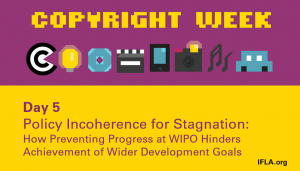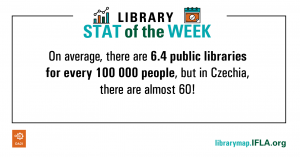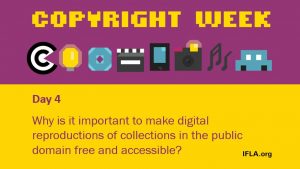
A lot of money gets spent on aid annually – $132 billion alone from members of the OECD’s Development Assistance Committee.
This includes not only simple financial support, but also large amounts of expertise and technical assistance, in order to promote growth and well-being around the world.
There is also the major effort made, for example through the United Nations and its 2030 Agenda, to set out goals and mobilise other resources in order to achieve them.
Given this level of commitment, it is normal that governments and NGOs alike want to ensure that this money – and these efforts – are most effective. A key challenge to this has long been the potentially negative (inadvertent) impact of other policies.
For example, European investment in helping an African country develop its agricultural exports will be wasted if the European Union then imposes quotas or tariffs that prevent them being sold.
This idea – that there needs to be an effort to promote coherence between policies in order to ensure the effectiveness of development – is now well established.
This blog looks to argue that a key area where there is a need for – and a current lack of – coherence is in approaches to discussions on international copyright law at the World Intellectual Property Organisation.
And in line with the theme of the 5th day of Copyright Week, it is a call for a proper democratic debate about this position, and whether it is time to change.
Work at WIPO: a Recap
IFLA, as part of a coalition of civil society organisations, has been calling for over ten years for international action on exceptions and limitations to copyright at the World Intellectual Property Organisation (WIPO).
This is a response to the fact that in too many countries around the world, existing limitations and exceptions do not cover all core activities of libraries, and are not adapted for the digital age.
While some claim that the fact that international law allows for exceptions is enough, there are many reasons why countries are not taking up these opportunities, including limited capacity, other immediate priorities, and in some cases, aggressive lobbying and threats of legal action.
For IFLA, international action can play a critical role in underlining the importance of passing the laws that libraries need to operate, and giving greater certainty about what is possible.
Yet efforts to promote international action are currently being blocked by a number of richer countries – in particular the European Union, the single biggest provider of development aid.
Clearly when a use of a work does cause unreasonable harm to rightholders, then it is necessary to find solutions. But this is not the question at stake when we are talking about preservation of heritage, use in research, or use of small parts of works for educational purposes.
A failure to include exceptions and limitations for these types of activity forces libraries and others to fall back on licencing schemes created either directly by rightholders or through collective management organisations.
This is, effectively, what the European Union and others are proposing.
For or Against Promoting Local Education, Research and Heritage?
This is ironic. The European External Action Service runs many projects on education, culture and research. Yet in its position at WIPO, it works against these goals.
For a start, blocking progress towards an international instrument removes a key impetus to carry out reforms that would allow key actors in culture, education and research to do their jobs in a digital age.
Moreover, beyond this harm done to the efforts of libraries, schools and universities to achieve their missions, this possibility may well also benefit larger, often foreign companies more than local ones.
For example, an insistence on enabling licencing solutions will favour most those who are able to call on extensive rights management departments – generally the larger players – creating offers that segment markets and maximise profits. Smaller, often local players are less able to create complicated offers.
An alternative is to promote collective licensing through collective management organisations. While this may help more money flow to local producers, it can just as well facilitate the flow of money out of developing countries and back into richer ones.
While this may be a legal obligation in the case of major uses of works, it seems particularly absurd that the limited resources of developing country libraries, schools, universities and research institutes should be channelled back to richer countries for uses which don’t actually harm markets. Moreover, such uses also often don’t lead to remuneration in the same richer countries.
A Double Dividend Missed
A particularly powerful impact of passing an international instrument would be the clarity it provides over the possibilities for cross-border cooperation. This can be an important point for libraries, archives, museums, schools, universities and research institutions in smaller or poorer countries.
For example, heritage institutions have collections which need to be digitised in order to be preserved for future generations. But the equipment needed for digitisation to a good standard may simply not be available in the country. Therefore, a preservation exception with purely national effect would have little real-world impact.
However, if a cross-border preservation exception were created, this opens the possibility of forming networks with institutions in other countries which do have the necessary equipment. It is possible to imagine regional preservation networks emerging, contributing both to the safeguarding of heritage for the long-term.
The same can go for cross-border education or research, where the value of legislating relevant exceptions domestically is multiplied when there is also the chance to work with counterparts in other countries.
In other words, by preventing progress towards an international instrument with cross-border effect, the European Union and others are diminishing – if not eliminating – the value of legislating nationally at all.
The ‘double dividend’ of an international instrument is clear in the case of the Marrakesh Treaty, with poorer countries benefitting not only from new possibilities to make and share accessible format works domestically, but also access to international collections.
In the light of this, it is time to bring more people into the discussion. Those who care about – and invest in – education, research and culture around the world need to have their say in the policy adopted by the European Union and others at WIPO.
There needs to be a democratic debate, and the full cost of the incoherence of the EU’s approach made clear.
 A key strength of public libraries is their reach across cities, towns and villages around the world.
A key strength of public libraries is their reach across cities, towns and villages around the world.
 Libraries have a major role to play in delivering fundamental freedoms.
Libraries have a major role to play in delivering fundamental freedoms.